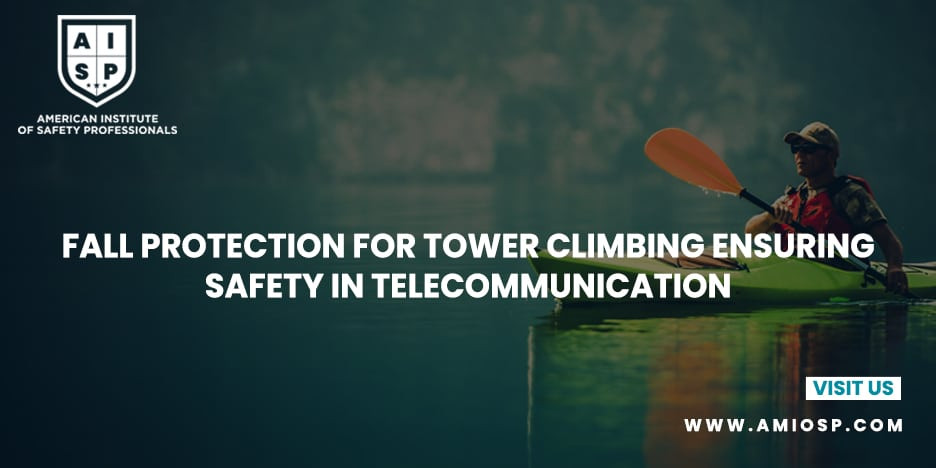Introduction:
Telecommunication towers play a crucial role in our
interconnected world, facilitating communication and enabling us to stay
connected. These towering structures are a result of engineering excellence,
but they also pose significant risks to the individuals who work on them. Tower
climbers face the inherent danger of falls while performing maintenance,
repairs, or installations. In order to ensure the safety of tower climbers and
minimize the risk of accidents, fall protection measures must be implemented
rigorously. This blog will delve into the importance of fall protection for
tower climbing and explore the key strategies and equipment that are employed
to enhance safety.
Understanding the Risks:
Tower climbing is inherently hazardous due to several
factors. The height of the structures presents the risk of falls from great
heights, which can result in severe injuries or even fatalities. Furthermore,
tower climbers often encounter challenging weather conditions, such as high
winds and extreme temperatures, which further increase the risks. The complex
nature of the work, involving intricate maneuvers and exposure to electrical
equipment, amplifies the potential dangers. It is crucial for employers and
tower climbers to recognize these risks and take proactive measures to protect
themselves.
Implementing Effective Fall Protection Measures:
Comprehensive
Training Programs:
Education and training are paramount in ensuring the safety
of tower climbers. Employers should invest in comprehensive training programs
that cover all aspects of tower climbing safety. These programs should include
theoretical knowledge about fall protection systems, equipment usage, emergency
procedures, and risk assessment. Practical training should also be provided to
simulate real-life scenarios and enable climbers to develop the necessary
skills and confidence to work safely at heights.
Risk
Assessment and Job Planning:
Before any tower climbing activity takes place, a thorough
risk assessment must be conducted. This assessment should identify potential
hazards, assess their severity, and develop strategies to mitigate the risks.
Job planning should involve careful consideration of weather conditions,
equipment requirements, and the qualifications and experience of the climbers.
By identifying and addressing potential risks in advance, tower climbers can
work more safely and effectively.
Fall
Arrest Systems:
Fall arrest systems are vital components of tower climbing
safety. These systems consist of harnesses, lanyards, and anchor points that
collectively prevent falls and minimize the impact in the event of a fall.
Harnesses should be properly fitted and regularly inspected to ensure they are
in good condition. Anchor points must be secure and capable of supporting the
weight of the climber. Lanyards should be equipped with shock absorbers to
reduce the force experienced during a fall. Regular inspection, maintenance,
and replacement of fall arrest equipment are essential to guarantee its
effectiveness.
Personal
Protective Equipment (PPE):
In addition, to fall arrest systems, climbers must utilize
appropriate personal protective equipment. Helmets protect against head
injuries from falling objects, while gloves shield hands from cuts and
abrasions. Eye protection is crucial to prevent debris or foreign objects from
entering the eyes, and high-visibility clothing enhances visibility for both
climbers and other workers on the site. The use of PPE should be mandatory, and
climbers should receive proper training on its selection, usage, and
maintenance.
Regular
Equipment Inspections:
All equipment utilized in tower climbing, including ladders,
ropes, and hoists, should undergo regular inspections to ensure their safety
and reliability. These inspections should be carried out by qualified
individuals and must adhere to established standards and guidelines. Any
equipment showing signs of wear, damage, or malfunction should be immediately
replaced or repaired to prevent accidents.
Conclusion:
Safety should always be the top priority when it comes to
tower climbing in the telecommunication industry. The implementation of
effective fall protection measures is crucial to safeguard the lives of tower
climbers and prevent accidents that can have devastating consequences.
Employers must invest in comprehensive training, conduct thorough risk
assessments, and provide the necessary equipment and PPE. By prioritizing
safety, the telecommunication industry can ensure that tower climbers work in a
secure environment, enabling them to contribute to the seamless connectivity we
rely on in our modern world.












0 comments
No Comments